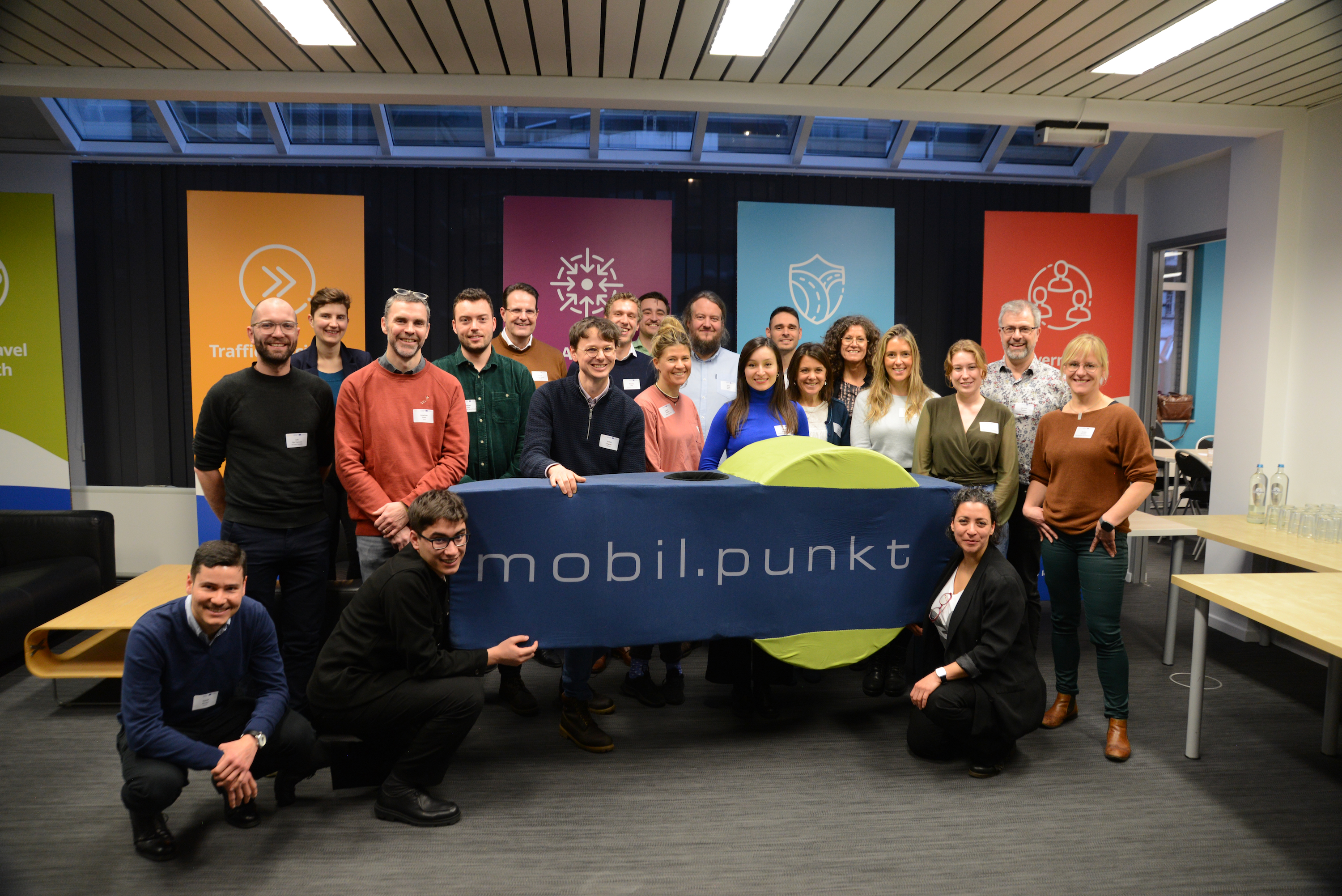The ShareDiMobiHub project in the Interreg North Sea Region brought European cities and regions together for a 2-day Academy. This event focused on two important topics: making sure everyone can use shared and digital mobility hubs, and integrating these hubs into real estate.
At the Academy, attendees had the chance to learn directly from experts involved in ShareDiMobiHub, SMALL, and SHARE-North Squared projects. They shared insights on how to improve shared and digital mobility hubs, ensuring they are welcoming and accessible to everyone.
Tjalle Groen from Mpact kicked off the academy by introducing our project. The city of Bremen took the lead in explaining the concept behind mobility hubs and their transformative impact on the city over the last two decades. Bremen boasts a rich history in shared mobility, facing similar challenges to many German cities, such as limited street space. Maximizing public use of this space has been a top priority for the local government. Since 1992, Bremen has seen a continuous evolution in shared mobility, culminating in a significant innovation with the launch of mobil.punkt. These public mobility stations in Bremen combine carsharing with public transport, cycling, walking access, taxi stands, and other local amenities. They range from larger stations with 4-12 carsharing vehicles to smaller ones with 2-3 vehicles. With more than 600 carsharing vehicles across over 150 stations, the city has achieved remarkable success: 30,000 users, reducing the need for over 8,000 private cars, and an efficiency rate where each carsharing vehicle replaces 16 private cars.
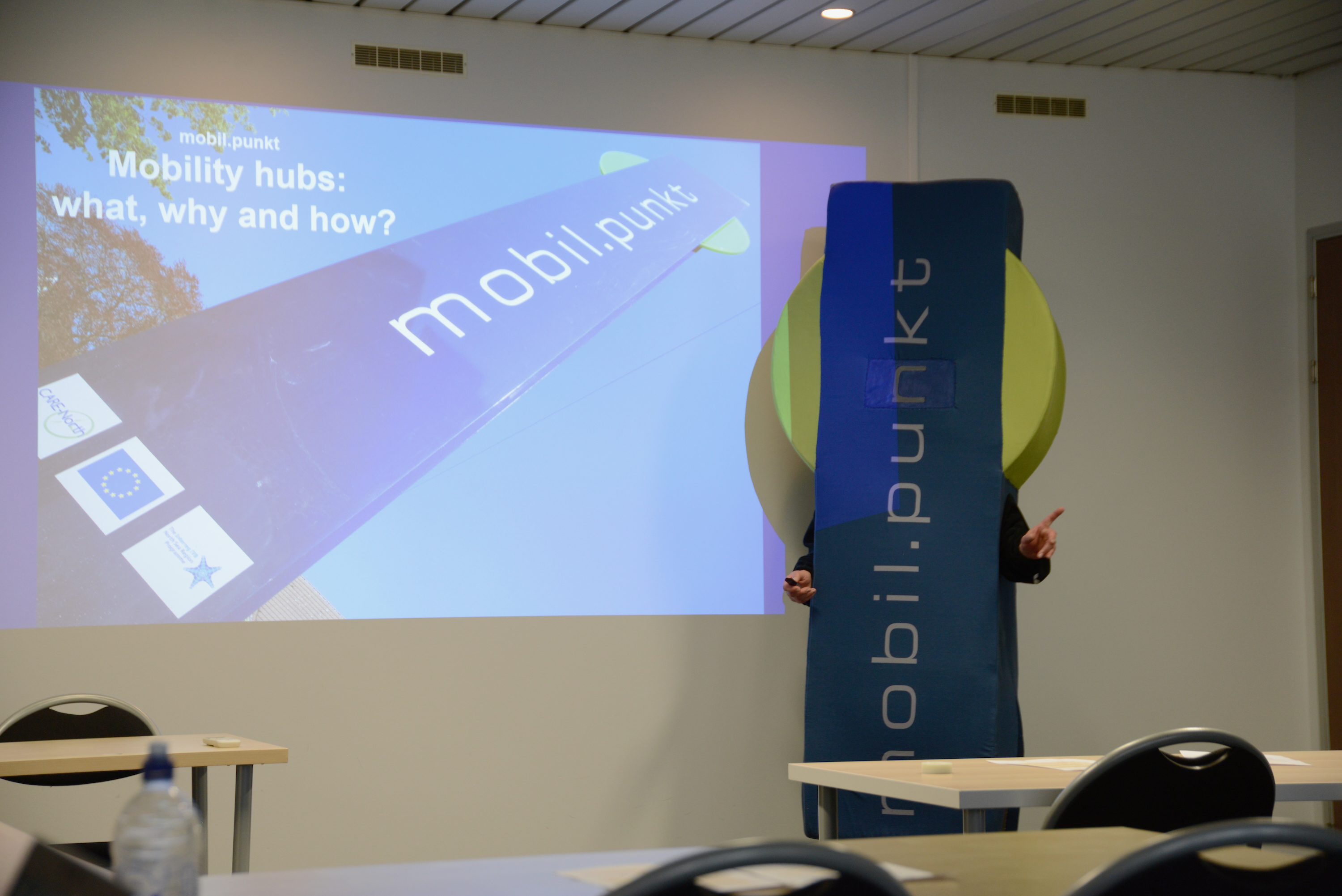
Mobil.punkt presenting his initiative
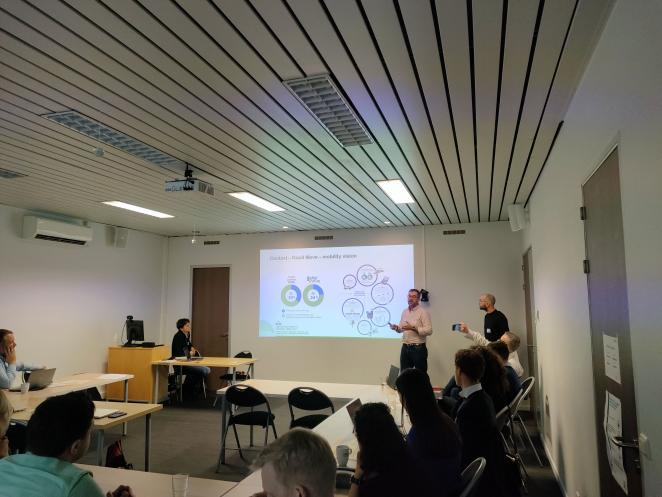
Regional Strategies and Real State Integration
The focus then shifted to regional strategies for developing mobility hubs. Martin Lefrancq and Loïc Nys Taymans shared insights from the Brussels-Capital Region. The region's mobility plan, Good Move, outlines key policies for mobility, aiming to enhance the quality of life in Brussels while supporting its demographic and economic growth. Developed in collaboration with project partners Mpact, the strategic vision for mobility hubs includes an exploratory study on existing knowledge and policy recommendations. At its heart, it offers tools for the strategic deployment of mobility hubs. This approach classifies hubs based on public transport availability, user demand, and location at intersections of public transport and bicycle networks. It also introduces a butterfly model for comparing different scenarios and analyzing current mobility hub situations.
The province of Utrecht, leading the ShareDiMobiHub project, then presented its role in managing a complex, evolving mobility landscape in both rural and urban settings. Wouter Slob explained how, as a regional authority, Utrecht is guiding the expansion of shared mobility, hubs, and Mobility-as-a-Service (MaaS) solutions amid shared responsibilities with national and local governments. Utrecht is proactive, organizing workshops to connect municipalities with shared mobility providers and offering legal and political support. The province is also spearheading the expansion of mobility hubs in the area and participating in the Living Lab MaaS to explore the integration of public transport and shared mobility.
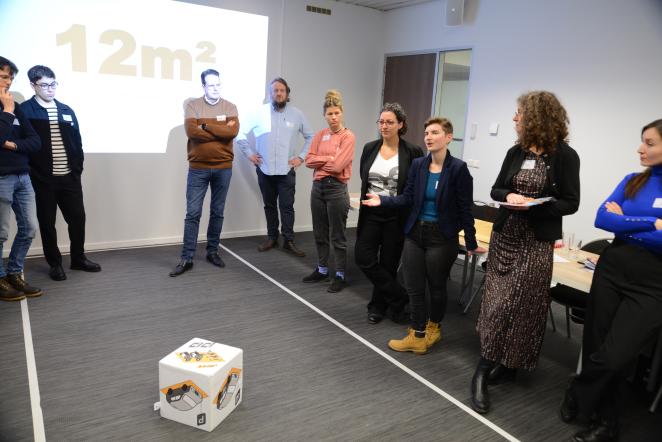
Next, we explored the connection between mobility hubs and housing policies, including partnerships with real estate and construction industries. Rebecca Karbaumer started by discussing Bremen's recent policy changes with the introduction of the Parking Bylaw in October 2022, which mandates mobility management for new buildings. This law allows for the integration of carsharing stations, provision of carsharing and public transport memberships, and requires real estate companies to develop strategies to promote these options. She highlighted the advantages and challenges of incorporating carsharing into new real estate projects.
Esther De Reys, representing the SHARE-North Squared project with Bremen's involvement, shared examples of effectively integrating shared mobility into real estate. Highlighting cases from Belgium, she outlined five key strategies for success, emphasizing the importance of long-term planning, legal frameworks, and collaboration with developers to create mutually beneficial solutions. She noted the financial benefits, such as saving €5000 per reduced parking spot, which can be reallocated to other uses.
The day concluded with a practical exercise. Participants were given the dimensions of a standard parking spot (12 m2) and discussed how to reallocate a specified budget to create various types of parking and shared mobility hubs. This exercise aimed to demonstrate how reimagining parking strategies and integrating shared mobility could save both public space and financial resources, potentially allowing for the addition of bike shelters or communal gardens.
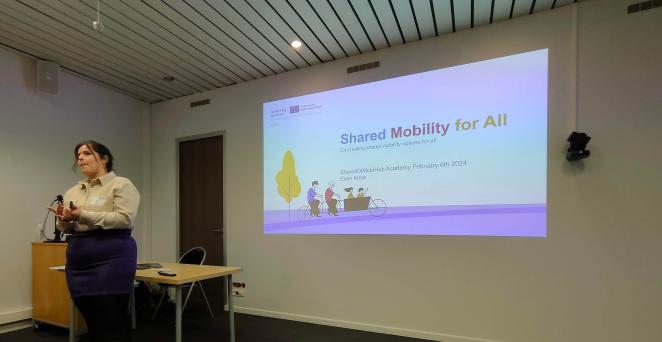
HOW TO MAKE SHARED MOBILITY HUBS INCLUSIVE?
The second day of the event was dedicated to the theme of inclusivity. Lluis Martinez, a researcher from VUB Mobilise and part of the SmartHubs project, focused on making shared mobility hubs more inclusive through user-centered design in his presentation. He discussed how the project is investigating the effects of mobility hubs on accessibility, vulnerability, and resilience within transport networks that include various modes and services, with a particular emphasis on supporting disadvantaged groups. He highlighted several key factors necessary to improve access to shared mobility and its hubs, including availability, reliability, payment and ticketing methods, the design of physical infrastructure, clear communication and signage, inclusive digital services, promotion and training for these services, human assistance, and safety and security.
Esen Köse followed, sharing insights from the SMALL project, which aims to make shared mobility more accessible to children, families, the elderly, and people with physical impairments. SMALL partners are collectively exploring the needs of individuals with reduced mobility and are testing 11 new solutions. These solutions include trials of new shared mobility services with adapted vehicles, making Mobility-as-a-Service (MaaS) and other digital information services more accessible to people with reduced mobility (PRM), and enhancing voluntary services. The project employs a co-creation approach, actively involving users through focus groups, storyboards, user diaries, and field trips, highlighting the challenges and tools of co-creation.
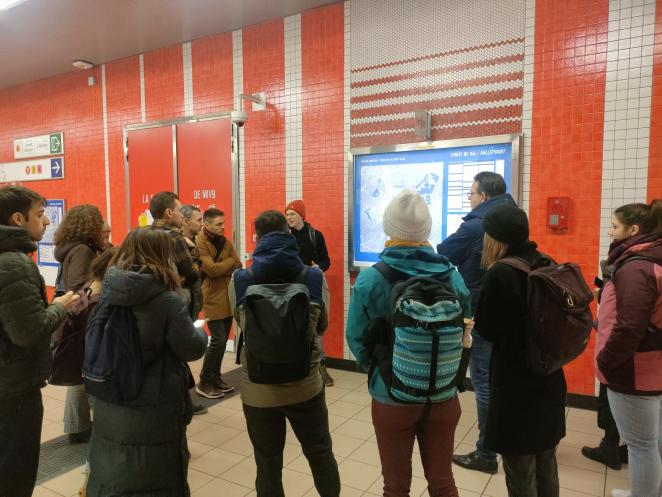
Lastly, the City of Amsterdam addressed their integration challenges in creating inclusive transport options. Geoff Holmes presented a study mapping out transportation options available in Amsterdam for people with reduced mobility and discussed the distribution of transportation use. He noted that issues such as trust, accessibility, and the need for accessible options throughout entire journeys are significant challenges in shared mobility, just as they are in other forms of transportation.
The Academy continued with its second practical session, utilizing a tool created by Mpact specifically for this project, named the Hub Inclusivity Test. In groups and guided by Mpact partner Jelten Baguet, participants applied this tool to evaluate various shared mobility hubs, assigning scores based on their accessibility levels. After this analytical exercise, the participants moved outside the conference venue for a field trip to Porte De Hal. This mobility hub is a comprehensive example of multimodal transport integration, featuring metro services, intra-regional and inter-regional buses, designated areas for shared cars, and docks for shared bikes. This visit provided a real-life context to the discussions on inclusivity and accessibility in shared mobility hubs.
The ShareDiMobiHub Academy was a unique opportunity showing the significance of shared and digital mobility hubs as essential components of future urban and regional mobility systems. By focusing on inclusivity, integration with housing policy, and the collaboration between various stakeholders, the event highlighted the pathways towards creating more accessible, efficient, and sustainable mobility solutions. As cities and regions continue to face the challenges of growth, congestion, and environmental sustainability, the insights and strategies shared at the academy offer valuable guidance for developing mobility solutions that are not only innovative but also inclusive and integrated into the broader urban fabric.
